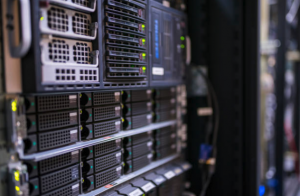
Recent transceiver standards solve data centre upgrade issues
By Ray Hagen, consulting systems engineer, AddOn Networks
Electronics data centre data centre standards standards transceiver transceiverEmergence of the QSFP form factor puts 100G within the cost reach of both small and hyper-scale data center operators
As more applications and data migrate into the cloud, core and edge networks must keep pace with the increased demands to avoid network bottlenecks. While once cost prohibitive, 100G network upgrades are now a viable option to improve network performance. The emergence of the QSFP form factor has brought economies of scale to 100G upgrades, putting 100G within the cost reach of both small and hyper-scale data center operators. With a small profile and reduced power consumption, the QSFP form factor is the choice of switch manufacturers for 100G platforms. Despite the economies of scale at the switch level, the urgency to upgrade can inevitably lead to unforeseen compatibility and budget issues.

Network infrastructure considerations
Network operators understandably want to stay ahead of network bottlenecks – however, careful consideration of existing cabling infrastructure and future compatibility must be addressed prior to rushing to replace individual network elements. Operators migrating to 100G will find that their upgrade costs may extend far beyond just the initial switch and transceiver. Take data centers and enterprise networks, for example. OM3 and OM4 duplex multi-mode fiber are ubiquitous and are often thought of as the building blocks to supporting the rising capacity needs. Duplex OM3 and OM4 cables are terminated with duplex LC connectors. Earlier generation 10G networks are reliant upon SFP-type transceivers that accept duplex LC connectors. Duplex LC patch cables are easy to clean and install, reducing technician training and overall complexity.
100G short-reach transceivers use a multi-fiber MPO-type connector to transmit and receive over four fiber pairs, rather than a single transmit and receive fiber pair used by 10G short-reach transceivers. Thus, the fiber requirements for an upgrade to 100G may be four times of what are necessary for 10G networks. In this scenario, network operators must evaluate their options that may include installing new patch cables, patch panels or fiber. However, it is important to realize the cable infrastructure costs may not end there. Additional considerations for the cable network infrastructure must be considered. Technicians must be trained beyond basic fiber cleaning procedures to handle MPO connectors. Accurately specifying the correct MPO cable for the application requires a firm understanding of MPO polarity as it relates to the transceiver and the fiber cabling environment. Some network operators may feel the need to re-evaluate their cable infrastructure, considering a partial or complete upgrade to a duplex single-mode fiber cable plant in comparison to a multi-fiber connector approach.

First generation 100G – CFP form factor Current Generation 100G –
Current data center architectures connect Ethernet switches located at the top of each rack or cabinet to aggregation points elsewhere in the network. This ‘Top-of-Rack’ architecture has dramatically increased the scope and scale of data center upgrades that cannot be understated given the massive size of today’s data centers. Medium or large data centers may house anywhere from 200 to 3,000 racks, let alone hyper-scale facilities that may house over 9,000 racks. Only simple math is required to understand that even small missteps in cable plant configurations can add up to significant cost increases. ![]()
To avoid feeling the pinch when it comes to upgrading network infrastructure, the SWDM4 standard was developed to be an affordable solution that does not compromise on quality and can be adapted for future needs.
Make the shift to SWDM4
Shortwave wavelength division multiplexing (SWDM) is a clear front runner in technology for preventing a financial sting of upgrades. SWDM, as defined by the SWDM Alliance, is a “cost-effective means to transmit multiple channels on one duplex multimode fiber pair.” SWDM4 technology has been designed specifically to support 100G over two-fiber multimode cable infrastructure. SWDM4 offers an operating range up to 75m over an OM3 fiber pair and up to 100m over an OM4 fiber pair.
Similar to the concept used in other wavelength division multiplexing standards, SWDM4 combines multiple signals onto a single fiber. SWDM4 is unique in that it combines four wavelengths generated by lower cost VCSEL technologies onto multi-mode fiber. SWDM4 transceivers meet the intended result of delivering 100G connections in the same manner as standard 10G transceivers – using a duplex, multi-mode fiber infrastructure.
Compatibility and interoperability considerations

Ray Hagen, consulting systems engineer, AddOn Networks
It’s not just 100G – SWDM4 also offers the ideal solution for 40G speeds, with a reach of up to 400m. SWDM4 differs from a legacy 40G QSFP+ bi-directional (BiDi) transceiver deployed by a dominant OEM switch manufacturer. SWDM4 is standards-based, ensuring that SWDM4 technology is interoperable with each other, no matter the manufacturer. The 40G QSFP+ BiDi relies upon a proprietary protocol, meaning it cannot connect with transceivers produced by other OEMs.
The Smart choice
The smart choice for compatibility and cost, SWDM4 transceivers are ideally suited for data center and enterprise needs. We are in the midst of a digital transformation where cable upgrades and capacity increases are crucial due to capacity demands and overly tapped budgets. High-speed SWDM4 makes this possible without inflated costs and the need for building additional network infrastructure.
